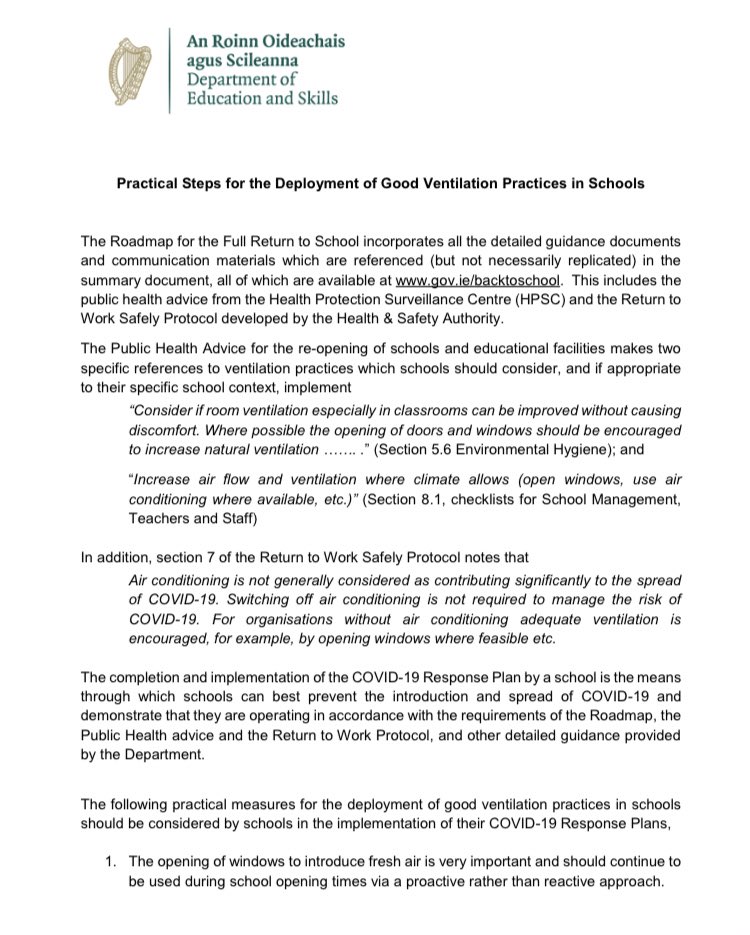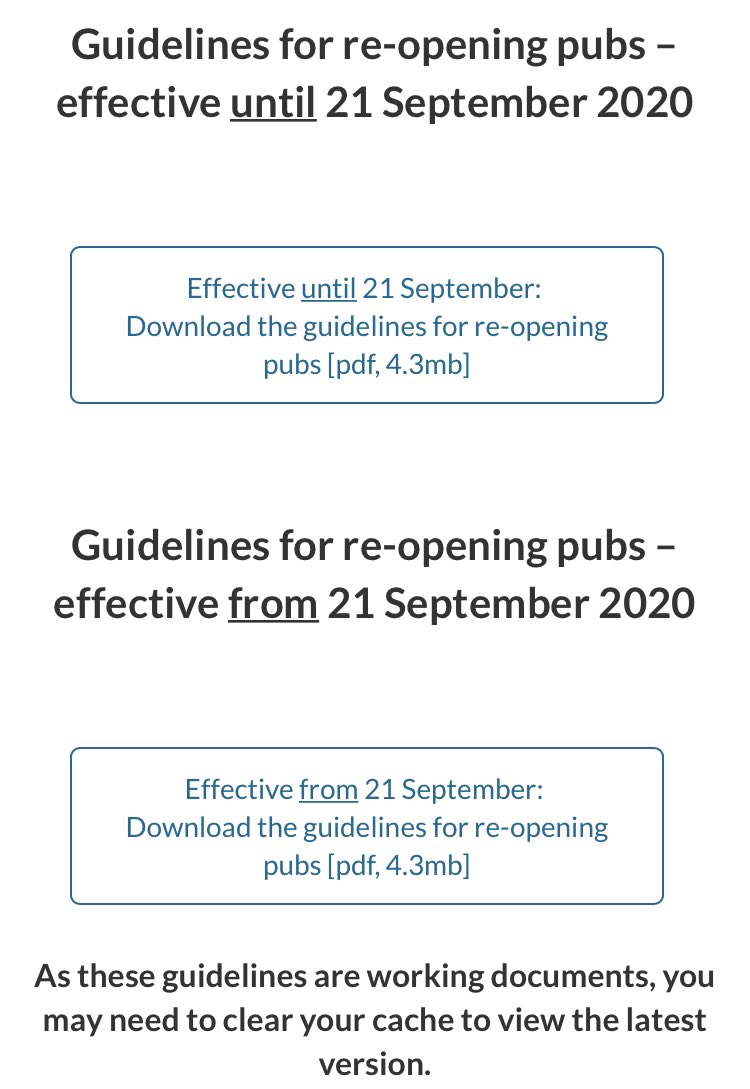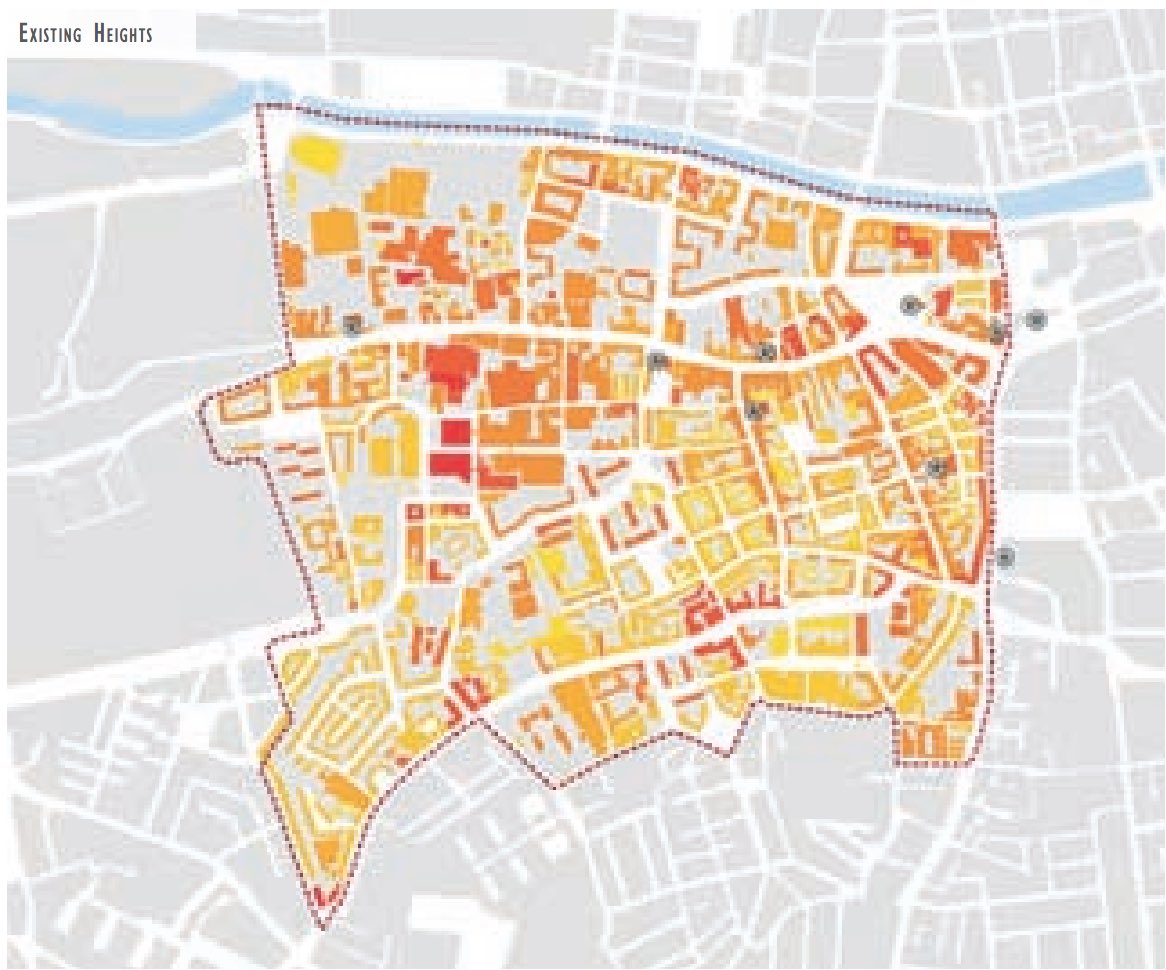
[Thread] Clean air & Ireland’s inconsistent #Covid19 rules 1/
‘possibility of airborne transmission of SARS-CoV-2 through aerosols is still uncertain..no conclusive proof..further research needed’ HPSC, 22 Sept
^known very high risk & there’s evidence hpsc.ie/a-z/respirator…
‘possibility of airborne transmission of SARS-CoV-2 through aerosols is still uncertain..no conclusive proof..further research needed’ HPSC, 22 Sept
^known very high risk & there’s evidence hpsc.ie/a-z/respirator…
..but ‘crowded indoor spaces have been shown to be associated with increased transmission.. determining what is due to proximity & poor hygiene practices, & what is ~due to poor ventilation~ though, is difficult’
^so, risk of spread due to poor ventilation is accepted by HPSC 2/
^so, risk of spread due to poor ventilation is accepted by HPSC 2/

..but, no rules from HSPC, just ‘suggestions, specifically for commercial & public buildings’ ..& only for mech ventilation, which is small % of all buildings ..but ‘residential & healthcare settings fall outside the scope of HPSC document’ ..& very limited advice for schools 3/ 

..Dept of Education issued interim advice: ‘virus is spread by droplets & is not airborne so the physical separation is enough, even if in the same room’ ..but ‘ensure choir & music room is well ventilated’ (24 June, still on website) 4/ education.ie/en/covid-19/in…
..then Dept Ed updated advice but not in main ‘Reopening Schools’ document & after some schools had started:
‘opening of windows to introduce fresh air is very important & should continue via a proactive rather than reactive approach’ (26 Aug) 5/
assets.gov.ie/85177/d9643a37…

‘opening of windows to introduce fresh air is very important & should continue via a proactive rather than reactive approach’ (26 Aug) 5/
assets.gov.ie/85177/d9643a37…


..meanwhile meat plants have ~no ventilation rules~ except ‘doors & windows (subject to appropriate fly screening) in canteen should remain open to allow greater air exchange‘ (16 Sept) 6/
^German meat plants evidence of airborne virus spread up to 8m hpsc.ie/a-z/respirator…
^German meat plants evidence of airborne virus spread up to 8m hpsc.ie/a-z/respirator…

..meanwhile current pub guidance: ‘COVID-19 is not transmitted by air but from person to person through small droplets from nose or mouth’
Fáilte Ireland sector-led guidance for hospitality (pubs, hotels, restaurants, spas etc)
^advice is incorrect 7/
covid19.failteireland.ie/business-suppo…
Fáilte Ireland sector-led guidance for hospitality (pubs, hotels, restaurants, spas etc)
^advice is incorrect 7/
covid19.failteireland.ie/business-suppo…

..meanwhile construction industry COVID19 sector-led guidance is ~paywalled~ to CIF members ..& HSE construction guidance is only about new cases, nothing about prevention 8/
^some construction work is high risk & clusters have occurred on sites cif.ie/download/hse-p…
^some construction work is high risk & clusters have occurred on sites cif.ie/download/hse-p…

..meanwhile nursing homes, also high risk, HIQA report (21 July) says nothing about ventilation ..or opening windows, except that residents: ‘looked forward to ~window visits~ but wondered if they would ever be able to hug their families again’ 9/
hiqa.ie/reports-and-pu…
hiqa.ie/reports-and-pu…
..meanwhile direct provision, another high risk setting, has guidance from Dept of Justice on cleaning surfaces & hand-washing, nothing on masks, airborne risks or importance of ventilation
^advice is incorrect & unsafe /10 accommodationcentres.ie/covid-19/
^advice is incorrect & unsafe /10 accommodationcentres.ie/covid-19/

..meanwhile HSE hospital advice:
‘Airborne transmission when infectious particles travel over long distances on air currents. Only particles of <5μm are small/light enough to travel this way’ /11
^this is not as current advice by ECDC, CDC, Dr. Fauci etc hpsc.ie/a-z/respirator…
‘Airborne transmission when infectious particles travel over long distances on air currents. Only particles of <5μm are small/light enough to travel this way’ /11
^this is not as current advice by ECDC, CDC, Dr. Fauci etc hpsc.ie/a-z/respirator…

..meanwhile no advice from HSE/NPHET to homes & majority of all buildings (that are ‘naturally ventilated’ with windows) about clean air, ventilation & immediate, free preventative measures to stop ~known~ super-spread conditions
Clean air is more important than clean hands
/12
Clean air is more important than clean hands
/12
How to stop a pandemic?
Stop the ~known~ super-spread conditions (crowds, indoors in poor ventilation)
‘To avoid another lockdown Germany must focus on identifying & preventing clusters’ #Covid19Ireland /13 news.bloomberglaw.com/health-law-and…
Stop the ~known~ super-spread conditions (crowds, indoors in poor ventilation)
‘To avoid another lockdown Germany must focus on identifying & preventing clusters’ #Covid19Ireland /13 news.bloomberglaw.com/health-law-and…

‘Japan identified ventilation as critically important to preventing conditions for super-spread.. With population of 126m the total number of deaths from Covid-19 in Japan is lower than in Ireland’ irishtimes.com/opinion/why-go…
• • •
Missing some Tweet in this thread? You can try to
force a refresh








